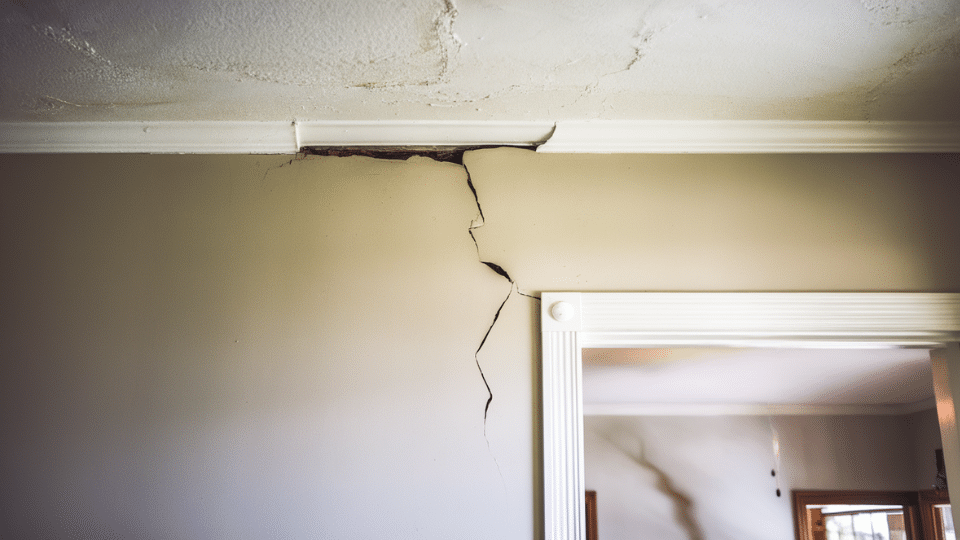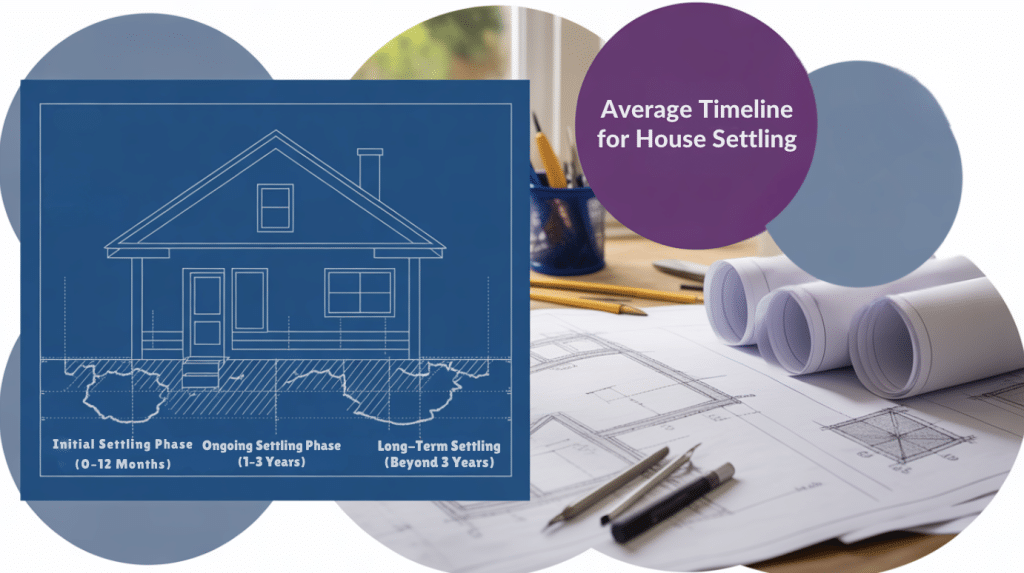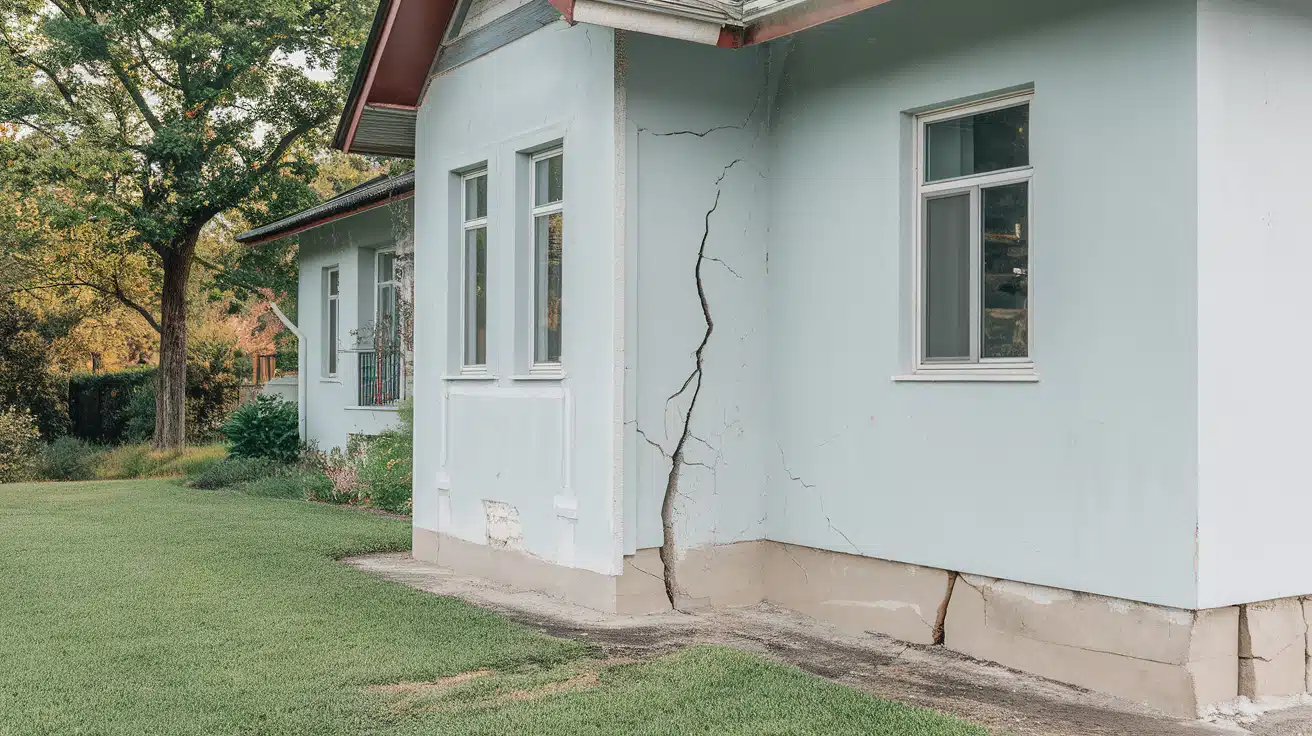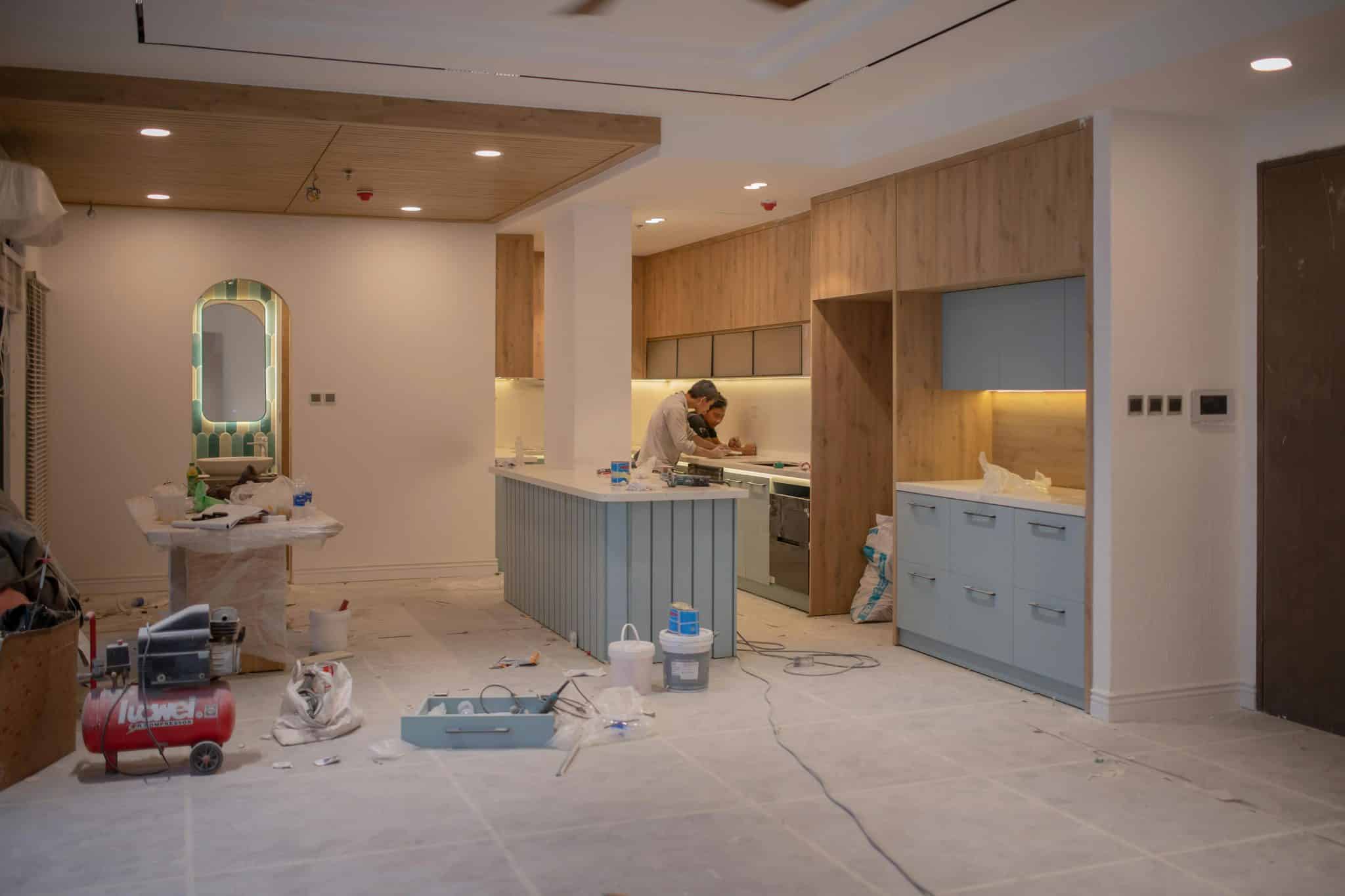You just bought your dream home, but now you’re noticing small cracks in the walls and doors that stick.
Is this normal? Most homeowners worry when they see these changes, but house settling is a natural process that occurs in every home.
House settling occurs when your home adjusts to its foundation and surrounding soil conditions. New homes typically settle most during their first year, while the process can continue for up to three years.
Understanding the difference between normal settling and problematic signs helps you know when to monitor changes and when to seek professional assistance.
Small hairline cracks are usually harmless, but large cracks or sloping floors need immediate attention.
This guide explains exactly how long houses take to settle and what you should expect during each phase.
What Is House Settling?
House settling refers to the natural process by which a home shifts and adjusts over time due to soil movement, compression of foundation materials, and environmental changes.
This occurs in both new and existing homes as the structure adapts to its surroundings. New homes typically experience more noticeable settling during their first few years, whereas older homes may settle due to seasonal changes, soil shifts, or the aging of materials.
Understanding the difference between standard and problematic settling helps homeowners know when to monitor changes versus when to seek professional help.
Normal vs. Problematic House Settling
| Normal Settling | Problematic Settling |
|---|---|
| Small hairline cracks in walls or ceilings | Large cracks wider than 1/4 inch |
| Minor gaps around windows or doors | Doors and windows that won’t open or close |
| Slight nail pops in drywall | Sloping or uneven floors |
| Seasonal cracks that appear and disappear | Cracks that grow larger over time |
| Minimal foundation movement | Foundation cracks or shifts |
| Cosmetic issues only | Structural damage or safety concerns |
Factors Affecting How Long a House Takes to Settle

A house’s settling time is influenced by soil type, climate, foundation design, and construction materials, typically taking months to years.
1. Soil Type
Clay soils expand and contract in response to changes in moisture, causing houses to settle over longer periods. Sandy and rocky soils provide more stable foundations with less movement over time.
The type of soil under your home directly affects the extent and duration of settlement. Homes built on clay may experience settling for several years, while those on rock settle quickly.
2. Climate and Weather
Extreme temperature and humidity changes cause building materials to expand and contract regularly. Heavy rainfall, flooding, and drought conditions significantly impact soil stability and settling patterns.
Seasonal weather variations can trigger new settling movements even in older homes. Areas with consistent climates typically experience less prolonged settling than regions with dramatic weather swings.
3. Construction Quality
Foundation type plays a significant role in settlement duration, with slab foundations typically settling more quickly than basement foundations.
High-quality building materials and proper construction techniques reduce settling time and severity. Poor construction methods can lead to prolonged settlement periods and structural issues. The skill of the construction crew directly impacts how well a house handles the settling process.
4. Drainage and Water Management
Proper drainage around the foundation prevents water from pooling and causing soil instability. Poor grading that allows water to collect near the house can significantly extend settling periods.
Effective water management systems help the soil maintain consistent moisture levels, thereby reducing soil settlement and movement. Inadequate drainage often leads to ongoing settling problems that persist for years.
5. Nearby Environmental Changes
Construction projects near your home can disturb the soil and trigger new settling in previously stable houses. Large tree roots can significantly impact soil moisture and stability, affecting the duration of soil settlement.
Landscaping changes that alter water flow patterns may restart the settling process. Heavy machinery or excavation work in the area can cause vibrations that affect settling.
Average Timeline for House Settling

- Initial Settling Phase (0–12 Months) The most dramatic settling happens during the first year as your house adjusts to its foundation and surrounding soil conditions.
- Ongoing Settling Phase (1–3 Years) Settling slows down significantly but continues as building materials adapt to local climate and seasonal weather patterns.
- Long-Term Settling (Beyond 3 Years) Minimal settling occurs after three years, and any major movement likely signals structural problems rather than customary adjustment.
- What Homeowners Can Expect in the First Few Years. Small cosmetic changes, such as hairline cracks, are regular, but large cracks or structural issues require professional inspection.
How To Minimize House Settling?
You cannot completely stop house settling since it’s a natural process, but you can minimize excessive movement through proper maintenance.
Ensure good drainage around your foundation by keeping gutters clean and grading soil away from the house.
Maintain consistent soil moisture levels by watering around the foundation during dry periods and promptly addressing any leaks.
Control tree growth near the foundation, as large roots can compromise soil stability and lead to ongoing settlement.
Regular foundation inspections and addressing minor issues promptly can prevent small problems from developing into major structural concerns.
While normal settling will occur regardless, these steps help reduce the severity and duration of the process.
What Homeowners Should Do During Settlement
Homeowners should monitor their house monthly during the first year by checking for new cracks, taking photos to track changes, and noting any issues with doors or windows.
Keep a simple log of settling signs to identify patterns and determine if problems are getting worse over time.
Contact a structural engineer immediately if cracks exceed a quarter-inch, floors slope, or multiple issues appear simultaneously.
Don’t hesitate to seek professional help when you’re concerned about safety or if settling signs continue to worsen rather than stabilize.
Final Thoughts
House settling is a normal process that most homeowners will experience, with the majority of movement occurring within the first three years.
New homes typically settle most during their initial 12 months as they adjust to foundation and soil conditions.
Factors such as soil type, climate, and construction quality all influence how long it will take for your house to settle fully.
Regular monitoring during the first few years helps you distinguish between normal settling and potential structural issues.
Stay vigilant, but don’t panic about minor changes in your home. Keep a simple log of any settling signs you notice, and don’t hesitate to contact a structural engineer if you’re concerned about safety.
Ready for a refresh? Explore more home improvement ideas to upgrade your space.
Frequently Asked Questions
When Should I Worry About House Settling?
Worry when cracks exceed a quarter-inch wide, floors slope, doors won’t close, or any settling signs continue to worsen over time.
Does a Home Ever Stop Settling?
Most homes stop noticeable settling after 3-5 years, though minor seasonal movements may continue throughout the home’s life.
How Long Does It Typically Take for a House to Settle?
Houses typically settle most during the first year, with the process largely complete within 2-3 years under normal conditions.
Do Houses Settle After 20 Years?
Houses rarely settle significantly after 20 years unless there are major environmental changes, foundation problems, or nearby construction activity.








